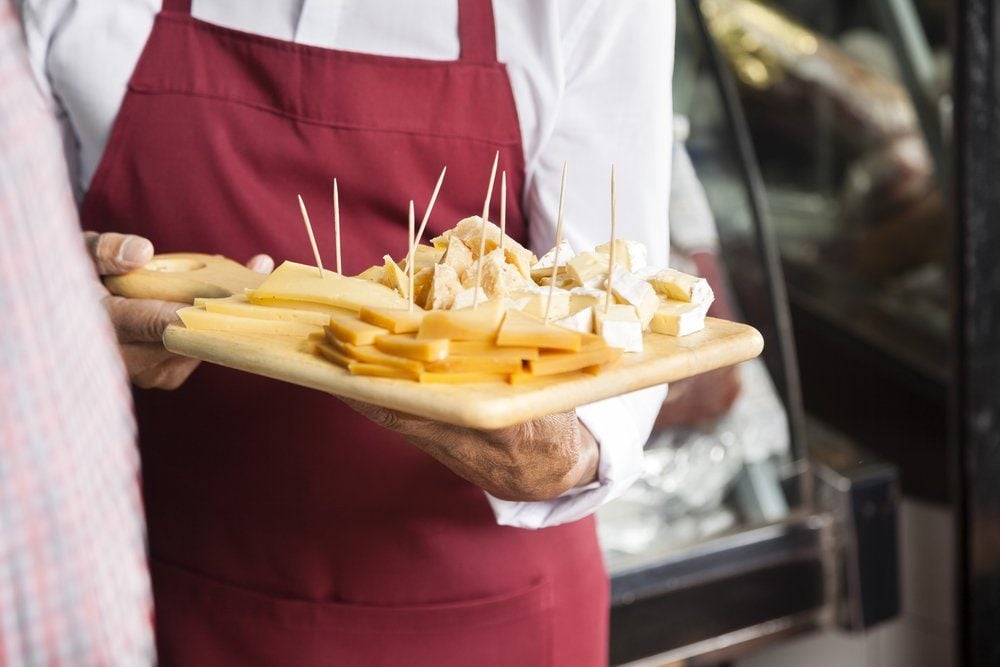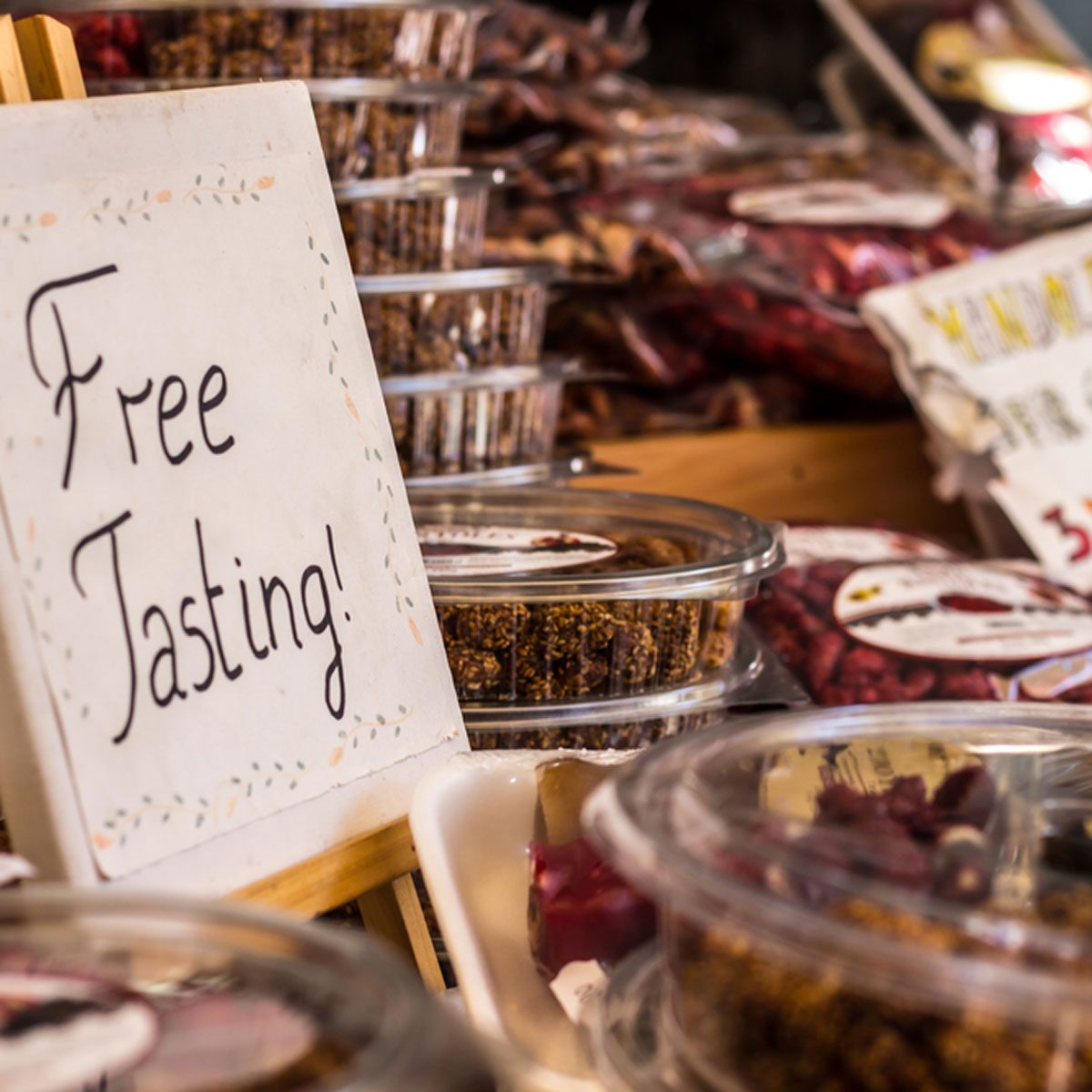Free food samples have emerged as a powerful marketing tool, enticing customers with the irresistible allure of taste. This comprehensive guide delves into the world of free food samples, empowering marketers with the knowledge and strategies to harness their potential for maximum impact.
From understanding the target audience to implementing effective sampling techniques, this guide provides a roadmap for successful free food sample campaigns.
Target Audience
Free food samples hold a unique appeal to a diverse range of individuals, transcending demographics and encompassing a broad spectrum of motivations and preferences.
Statistically, the target audience for free food samples skews slightly towards females, with women accounting for approximately 55% of consumers. Age-wise, younger individuals aged 18-35 exhibit a higher propensity to seek out free food samples, driven by a combination of curiosity, taste-bud exploration, and budget-consciousness.
Age Demographics
- 18-24 years: 30%
- 25-34 years: 25%
- 35-44 years: 20%
- 45-54 years: 15%
- 55+ years: 10%
Gender Demographics
- Female: 55%
- Male: 45%
Income Demographics
Free food samples appeal to individuals across various income levels. However, those with lower incomes tend to demonstrate a stronger interest in these offerings, as they represent an opportunity to supplement their diets and explore new food options without incurring significant expenses.
Location Demographics
Urban areas with high population density serve as hubs for free food sampling events. Individuals residing in cities are more likely to encounter these opportunities at grocery stores, shopping malls, and community gatherings.
Motivations and Preferences
The motivations behind seeking out free food samples vary widely, ranging from simple curiosity to a genuine desire to discover new flavors. Many consumers appreciate the chance to try before they buy, reducing the risk associated with purchasing unfamiliar products.
Preferences for specific types of food samples also differ, with sweet treats, savory snacks, and healthy options all garnering significant interest. Gluten-free and vegan samples have gained popularity in recent years, catering to growing dietary restrictions and preferences.
Distribution Channels

Free food samples can be distributed through a variety of channels, each with its own advantages and disadvantages.
Grocery Stores
Grocery stores are a common channel for distributing free food samples. They offer a large audience of potential customers who are already in the mindset of purchasing food. However, grocery stores can also be a competitive environment, and it can be difficult to stand out from the crowd.
Farmers’ Markets
Farmers’ markets are another great place to distribute free food samples. They offer a more targeted audience of people who are interested in local and organic food. However, farmers’ markets can be seasonal, and they may not be available in all areas.
Community Events
Community events are a great way to reach a large audience of people who are already interested in your product. However, it can be difficult to get your samples noticed at a crowded event.
Types of Food Samples: Free Food Samples

Food samples come in various forms, each designed to provide consumers with a taste of the product. These samples can range from small, bite-sized portions to larger, more substantial servings.
The table below lists different types of food samples, along with their serving sizes and packaging:
Types of Food Samples, Free food samples
| Food Item | Serving Size | Packaging |
|---|---|---|
| Bite-Sized Samples | One bite | Individual packaging or trays |
| Cups or Containers | 2-4 ounces | Single-serve cups or containers |
| Skewers or Toothpicks | 1-2 pieces | Skewers or toothpicks |
| Miniature Versions | Smaller versions of the full-size product | Individual packaging or trays |
| Sliced or Cut Samples | Thin slices or small cuts | Trays or plates |
Popular food samples include bite-sized cookies, crackers, and candies. Unique samples might include gourmet cheeses, artisanal breads, or exotic fruits.
Marketing Strategies
To successfully promote free food samples, a comprehensive marketing plan is essential. This plan should Artikel strategies for reaching the target audience, creating compelling promotional materials, and tracking the effectiveness of the campaign.
Effective marketing strategies for free food samples involve identifying the target audience, understanding their preferences, and tailoring the promotion accordingly. Additionally, leveraging multiple distribution channels, creating visually appealing and informative promotional materials, and utilizing social media and online advertising can significantly increase the reach and impact of the campaign.
Identifying the Target Audience
Identifying the target audience is crucial for the success of any marketing campaign. In the context of free food samples, this involves understanding the demographics, psychographics, and behavioral patterns of the individuals most likely to be interested in trying the product.
- Consider factors such as age, gender, income, lifestyle, and dietary preferences.
- Conduct market research through surveys, focus groups, or data analysis to gather insights into the target audience.
- Define the target audience clearly and create a buyer persona to represent their characteristics.
Creating Compelling Promotional Materials
Creating compelling promotional materials is essential for capturing the attention of the target audience and generating interest in the free food samples. These materials should be visually appealing, informative, and persuasive.
- Use high-quality images or videos to showcase the food samples and highlight their key features.
- Provide clear and concise information about the product, including its ingredients, nutritional value, and any special promotions.
- Use persuasive language and a call-to-action to encourage the audience to try the samples.
Sampling Techniques

Sampling techniques play a crucial role in distributing free food samples effectively. Choosing the right technique depends on factors such as the type of product, target audience, and distribution channel.
To set up a successful sampling station, consider the following:
- Location:Choose a high-traffic area with good visibility.
- Signage:Create eye-catching signs that clearly display the product and its benefits.
- Staff:Train staff to be friendly, knowledgeable, and engaging.
- Equipment:Ensure you have necessary equipment like sample cups, plates, and napkins.
In-Store Sampling
In-store sampling allows customers to try products before purchasing them. This technique is effective for introducing new products or promoting existing ones.
- End-of-aisle displays:Place samples at the end of aisles where customers are likely to notice them.
- Product demonstrations:Offer live demonstrations of how to use the product, highlighting its features and benefits.
Out-of-Store Sampling
Out-of-store sampling takes place outside of retail locations, reaching customers in different settings.
- Community events:Attend local festivals, farmers’ markets, or community gatherings to distribute samples.
- Guerrilla marketing:Use unexpected and creative ways to distribute samples, such as handing them out in busy pedestrian areas.
Online Sampling
Online sampling provides digital samples or coupons for customers to redeem at retail stores.
- Social media campaigns:Run contests or giveaways on social media platforms to distribute digital samples.
- Email marketing:Offer exclusive samples or coupons to email subscribers.
Tips for Engaging with Potential Customers
- Be friendly and approachable:Greet customers with a smile and make them feel comfortable.
- Provide clear information:Briefly explain the product and its benefits, without overwhelming customers.
- Offer incentives:Encourage customers to try the sample by offering a small incentive, such as a discount or coupon.
- Follow up:Collect customer contact information for future marketing efforts or to gauge feedback on the product.
Data Collection and Analysis
Evaluating the success of free food sampling initiatives requires effective data collection and analysis. By tracking key metrics and analyzing the results, businesses can gain valuable insights to optimize future campaigns.
Tracking Metrics
Essential metrics to monitor include:
- Sample Distribution:Number of samples distributed, locations, and time periods.
- Customer Engagement:Interactions with brand representatives, sample requests, and feedback.
- Sales Conversions:Increase in sales directly attributable to the sampling campaign.
Data Analysis
Analyze the collected data to identify trends and patterns. This includes:
- Descriptive Statistics:Summarizing data with measures like mean, median, and standard deviation.
- Hypothesis Testing:Evaluating whether there is a significant difference between sample and control groups.
- Regression Analysis:Determining the relationship between sample distribution and sales conversions.
Based on the analysis, make adjustments to future campaigns, such as:
- Optimizing sample distribution locations and times.
- Improving customer engagement strategies.
- Targeting specific customer segments.
FAQ
What are the benefits of offering free food samples?
Free food samples offer numerous benefits, including increased brand awareness, enhanced customer engagement, positive brand perception, and potential sales conversions.
How do I determine the target audience for my free food sample campaign?
To identify the target audience for your campaign, consider factors such as age, gender, income, location, and lifestyle preferences. Conduct market research to gather insights into your potential customers.
What are some effective distribution channels for free food samples?
Effective distribution channels for free food samples include grocery stores, farmers’ markets, community events, trade shows, and online platforms. Each channel offers unique advantages and disadvantages, so choose the ones that align best with your target audience and campaign goals.
